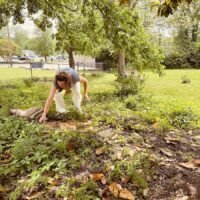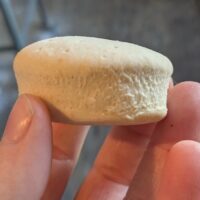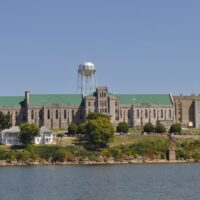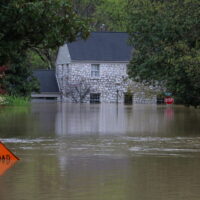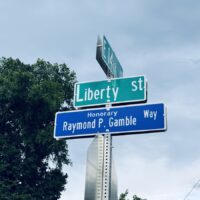The wending of stories through time reminds me of the game of telephone, the object of which is to see how much a message changes when it is whispered from one person to the next in a large circle of players.
Humor me; something happens, which at the time seems fairly straightforward. As the event recedes further into the past, facets of the story get dropped, added, changed, or just plain garbled. Seventy years down the line, it’s become a whole new animal, and one that might not even be the same species as the original!
I’ve been chasing my own game of historic telephone since the fall. It all started with radiators.
Bring on the Heat
Radiators are something a surprising number of people have an opinion on. The population seems to be split about 50-50. Radiators are either awful, leak all the time, and are not worth the effort you put into them, or they’re just the best, most even source of heat you can possibly have in your house. I suspect both are true!
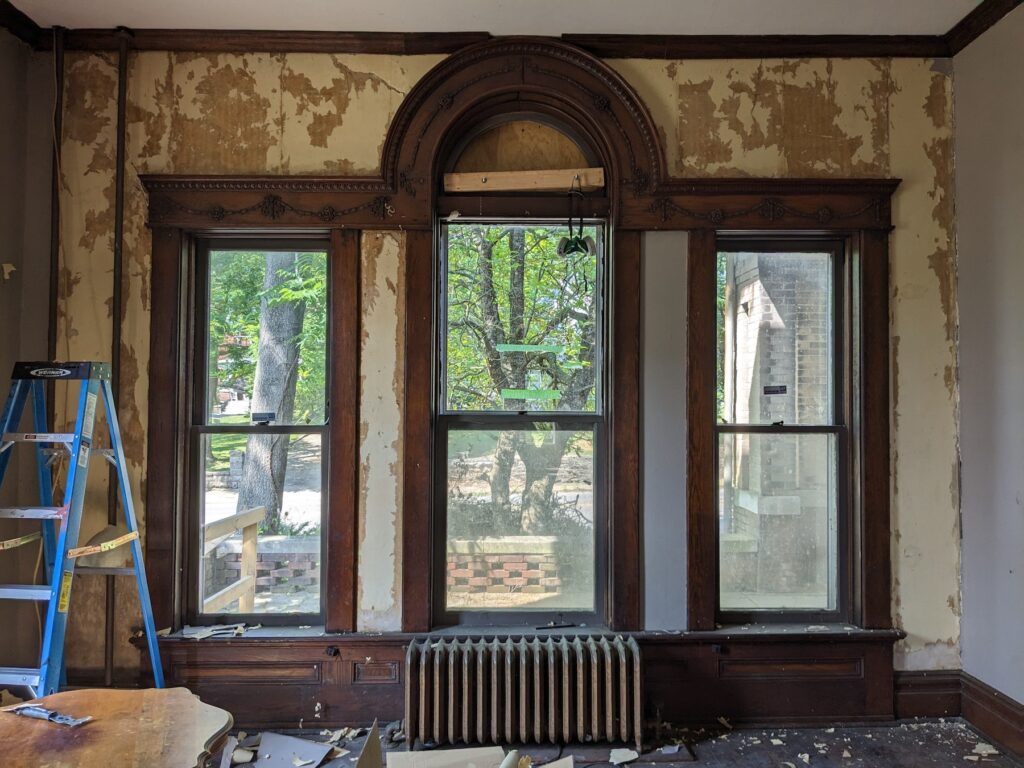
One of my personal sticking points on making the Dalton house livable is using radiators to heat it. That’s the system in place, although, from the condition of the radiators, it seems unlikely the owners before us had been using it. The Dalton house has never been updated to a forced air system, so there are no vent holes in the floors and ceilings and no ducting.
Little Radiators
The Dalton house came mostly equipped with its original radiators. There are two kinds: the standard tall ones and short ones that stand just 20 inches high. The little radiators sat in front of the Palladian windows in the parlor and family room, just skimming the bottoms of the window sills. Unfortunately, each had a golf-ball sized hole in one end.
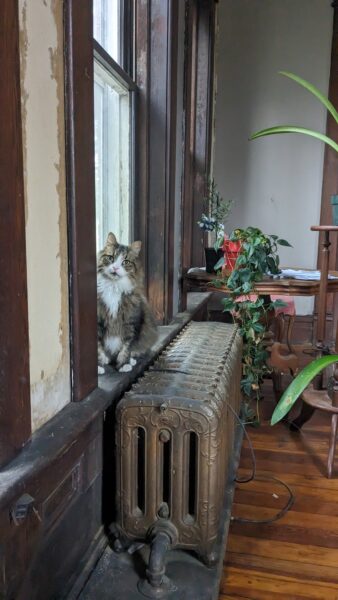
At some point, the pipes must have frozen. Water left inside the radiators expanded as it turned into ice. The design seems like it had an inherent weak spot, causing all the little radiators to fail in the same place. Judging from the staples and tacks littering the window surrounds throughout the house, this failure happened before the Dalton house was abandoned. The owners put plastic over the windows in what must have been a desperate attempt to trap heat.
It was clear we would have to replace the little radiators. Here, we hit a snag.
We found little-sized salvaged radiators for sale, but most were 21 to 24 inches tall, which would stick up above the window sills. We scoured the internet and searched all over the Midwest. At one point, we even considered driving to Chicago to get some.
In a stroke of pure, dumb luck, we stumbled upon a batch of short radiators being removed from a house in Hopkinsville. They were beautiful little Art Deco radiators, only 14” tall. When we went to pick them up, the seller told us that they had been salvaged from the old Bellsouth building, a telephone building in Hopkinsville taken down in the 1940s. In fact, the entire house that these radiators were now being removed from had been built out of salvage from that building!
The Bellsouth Building: Fact or Fiction?
I made a mental note to find out more about the Bellsouth building. But I didn’t think about it again until someone contacted the Museums of Historic Hopkinsville-Christian County with a question about some old columns and woodwork they had bought. The person who sold them the woodwork said it came from a telephone building that was taken down in the 1940s.
Of course, I thought, this had to be the same story. The newspaper would have reported on it at the time of the demolition. It would just be a simple matter of finding the article. An hour later, I was empty-handed. Not only did I not find anything about the Bellsouth building being taken down, now it seemed there had never even been a Bellsouth building in Hopkinsville.
Southern Bell and the Cumberland Telegraph Building
I backed up and started a deep dive into telephone history. The Bellsouth company, now AT&T, formed over time by acquiring many other companies. One such company was Southern Bell, absorbed in the 1990s.
Southern Bell, it turned out, came to Hopkinsville in 1942. Now we were getting somewhere.
A telephone network had existed in Hopkinsville since the beginning of the 1900s. At different times, it had been run by different individuals and companies, all housed in the Cumberland Telegraph Building at 202 E. Ninth St. Built in 1903 by Lucien Davis, this fantastic edifice is the only Flemish revival architecture I know of in Hopkinsville. Southern Bell moved into this building when it arrived in Hopkinsville in 1942. The Cumberland Telegraph building still stands, and so it is not the mystery telephone building of the story.
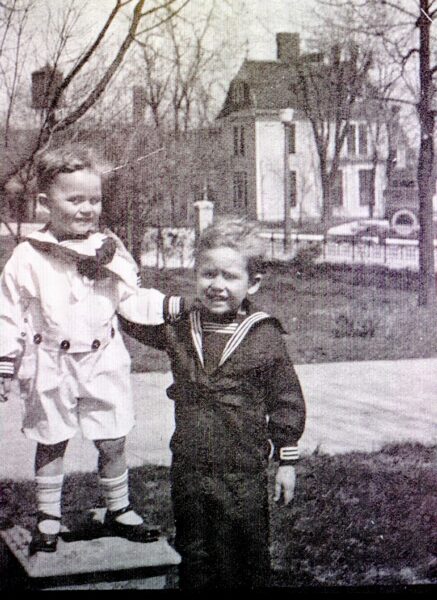
The AT&T Building
After more digging, I discovered that, in 1948, Southern Bell decided they had outgrown the Cumberland Telegraph building. They wanted a new, modern office. They purchased a lot on the corner of South Main and East 13th streets, today 1210 S. Main St., and built the brick AT&T building with limestone trimmings that stands there today.
This is the second of just two telephone buildings ever standing in Hopkinsville. This means that no telephone building has ever been demolished in Hopkinsville, and the story I’ve been chasing has a fundamental flaw. The game of telephone strikes again!
What’s the Real Story?
Our radiators and the woodwork in the museum query were salvaged from somewhere. But where?
When Southern Bell bought 1210 S. Main St. in 1948, the lot had a building on it. This was the Selden Trimble house, a rambling 1890s Victorian frame dwelling built by and lived in for many years by the lawyer, Trimble.
Southern Bell had the Trimble house demolished to clear the way for their new building. It is the Trimble house, not a telephone building, from which our radiators and all this salvaged woodwork originated. The story has just become muddled over time, twisting it from “this was salvaged from a building the telephone company took down,” into “this came from an old telephone building that was taken down.”
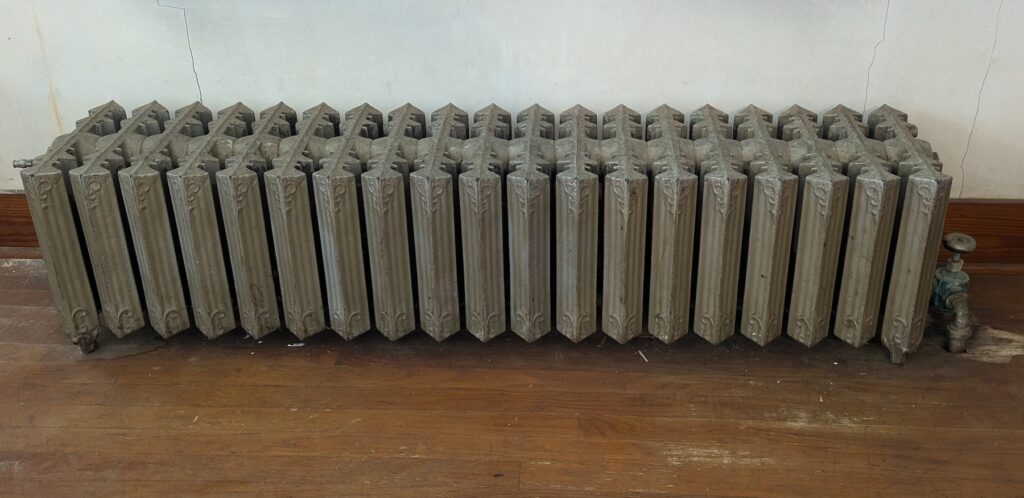
The cherry on top?
I found a historic photograph of the Trimble house, and the columns just barely visible on its porch match those in a photo submitted in the query to the museum.
Actually, the real cherry on top for me is that the Trimble house radiators all work and keep our house very warm!
Grace Abernethy is a historic preservationist and artist who specializes in caring for and recreating historic architectural finishes. She earned her Master of Science in Historic Preservation from Clemson University in 2011 and has worked on historic buildings throughout the eastern United States. Abernethy was a recipient of the South Carolina Palmetto Trust for Historic Preservation Award in 2014 and won 2nd place in the Charles E. Peterson Prize for the Historic American Buildings Survey in 2011. She and her husband, Brendan, moved to Hopkinsville from Nashville in 2020. She works as an independent contractor and is a board member of the Hopkinsville History Foundation.

